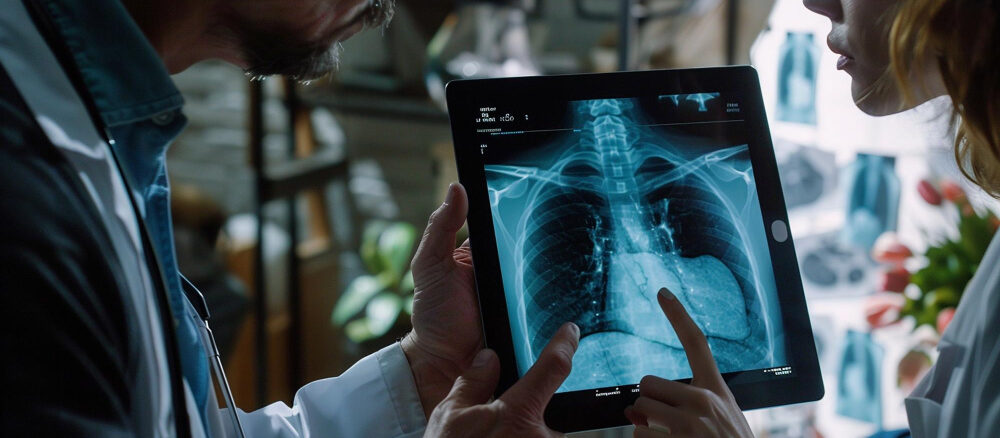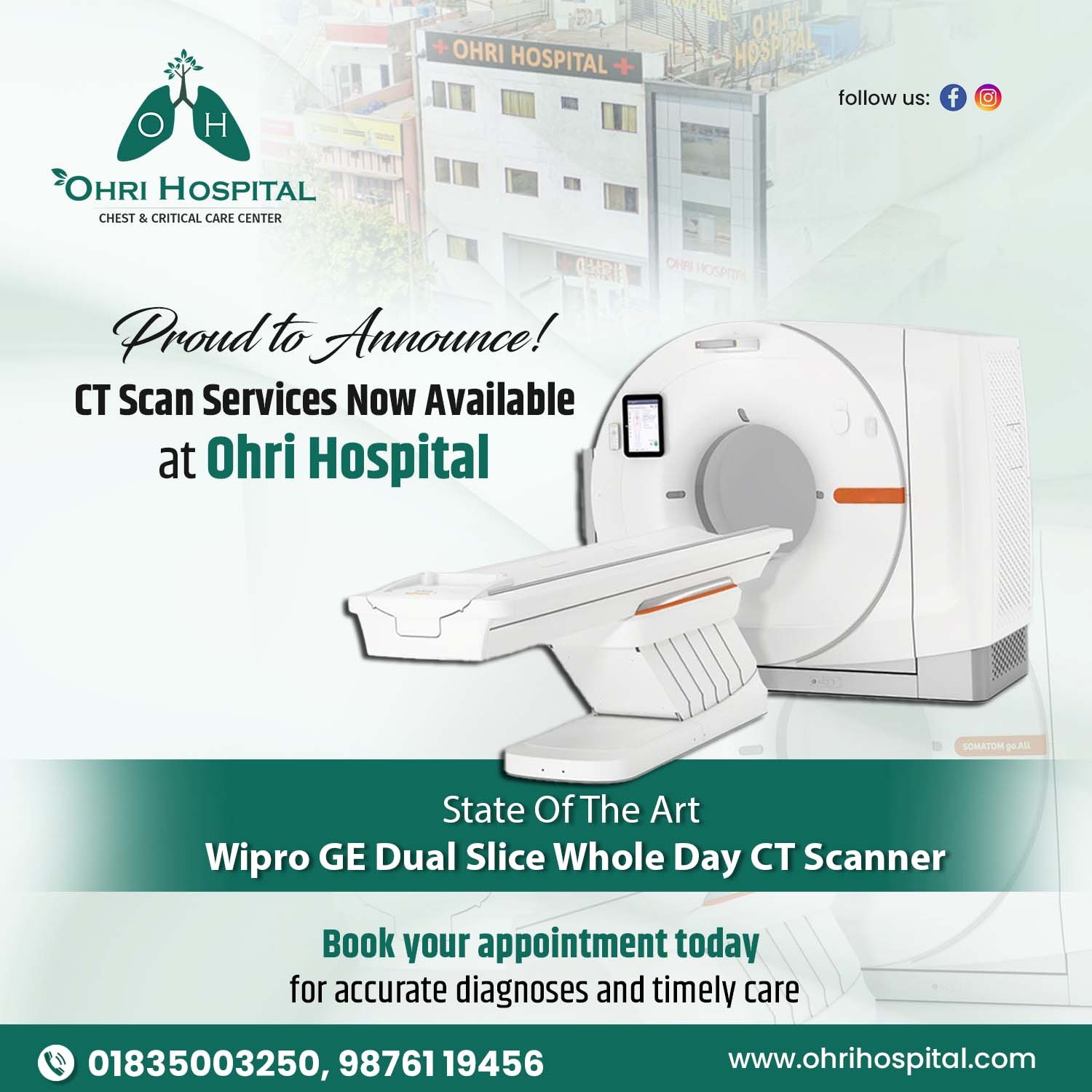Modern medicine is evolving rapidly — and one of the most exciting transformations is the use of Artificial Intelligence (AI) and Deep Learning in diagnosing chest and lung diseases.
At Ohri Hospital, Amritsar, under the expert guidance of Dr. Pardeep Ohri, these cutting-edge technologies are being adopted to provide faster, more accurate, and early detection of critical chest conditions — helping patients receive timely treatment and better outcomes.
What Is AI and Deep Learning in Medical Imaging?
Artificial Intelligence (AI) refers to the use of computer systems that can analyze data and make intelligent decisions, similar to how humans think and learn.
Deep Learning is a subset of AI that uses advanced algorithms (neural networks) to process large amounts of medical images — such as chest X-rays and CT scans — to detect patterns and abnormalities that may not be easily visible to the human eye.
In chest imaging, this means AI can analyze scans within seconds, highlighting possible signs of disease such as:
- Lung infections (like pneumonia or tuberculosis)
- Chronic Obstructive Pulmonary Disease (COPD)
- Interstitial Lung Disease (ILD)
- Lung nodules or early-stage cancer
- Pleural effusion (fluid around lungs)
How AI Is Transforming Chest Disease Diagnosis
- Faster and More Accurate Diagnosis
Traditional chest imaging requires time and manual interpretation by radiologists and pulmonologists. AI tools can quickly scan thousands of images and detect subtle changes in the lungs, allowing doctors to diagnose diseases much earlier. - Enhanced Detection of Hidden Abnormalities
AI algorithms are trained using millions of medical images. This allows them to pick up small nodules, micro-lesions, or minor lung tissue damage that may go unnoticed during manual review. - Support for Clinical Decision-Making
AI doesn’t replace doctors — it assists them. At Ohri Hospital, Dr. Pardeep Ohri uses AI-driven insights as an additional layer of confirmation, helping ensure no detail is missed and every patient receives the most precise diagnosis. - Improved Monitoring and Follow-Up
For patients with chronic chest diseases such as COPD or fibrosis, AI-based imaging helps track disease progression over time. Even the slightest changes can be monitored through automated comparison of past scans. - Accessible and Affordable Care
In a country like India, where the number of radiologists is limited compared to the patient load, AI tools can bridge the gap by speeding up reporting and reducing waiting times — making advanced care accessible to more people.
Applications of AI in Common Chest Conditions
1. Tuberculosis (TB) Detection
AI-powered X-ray analysis helps detect TB faster, especially in early or asymptomatic stages, aiding in quicker isolation and treatment.
2. COVID-19 and Post-COVID Lung Complications
During the pandemic, AI imaging systems were crucial in identifying lung involvement and severity. Even today, they help detect post-COVID fibrosis and scarring.
3. Lung Cancer Screening
Deep learning models can identify tiny lung nodules long before symptoms appear — offering hope for early treatment and higher survival rates.
4. Pneumonia and Infections
AI tools help distinguish bacterial and viral infections through unique imaging patterns, guiding doctors toward the right treatment faster.
Dr. Pardeep Ohri’s Vision: AI-Assisted Chest Care for Every Patient
At Ohri Hospital, Amritsar, Dr. Pardeep Ohri believes that technology and human expertise must work hand-in-hand.
By integrating AI and advanced chest imaging tools, Dr. Ohri and his team are redefining the way chest diseases are diagnosed and managed — especially for patients who require accurate diagnosis without delay or unnecessary procedures.
His approach emphasizes:
- Non-invasive, precise diagnosis
- Early detection before complications occur
- Personalized treatment plans based on imaging insights
- Continuous monitoring using AI-assisted imaging
The Future of Chest Imaging
AI and Deep Learning are not replacing doctors — they are empowering them.
In the near future, patients can expect:
- Predictive analysis that detects risk before disease onset.
- Remote AI diagnostics for rural areas.
- Fully automated imaging workflows that save time and cost.
At Ohri Hospital, these innovations are already becoming a reality, ensuring Amritsar residents receive world-class chest care right at home.
Final Thoughts
Artificial Intelligence and Deep Learning are shaping a new era in respiratory and chest healthcare. With accurate, fast, and smart diagnosis, these technologies are helping experts like Dr. Pardeep Ohri deliver the best care possible — ensuring that every breath counts. If you or your loved ones experience symptoms like persistent cough, shortness of breath, or unexplained chest pain, don’t delay.
Visit Ohri Hospital, Amritsar, and consult Dr. Pardeep Ohri for advanced, AI-assisted chest care that blends innovation with compassionate expertise.


